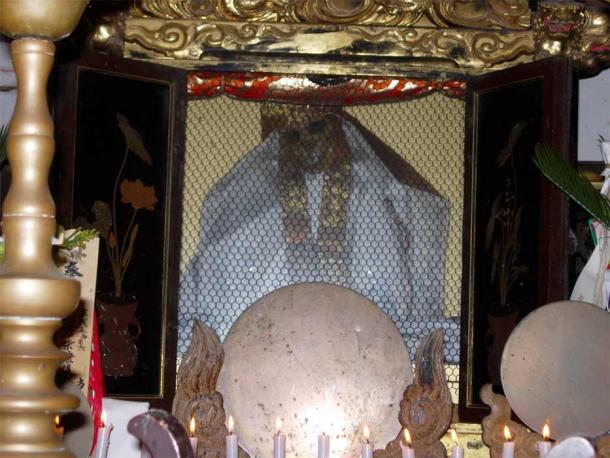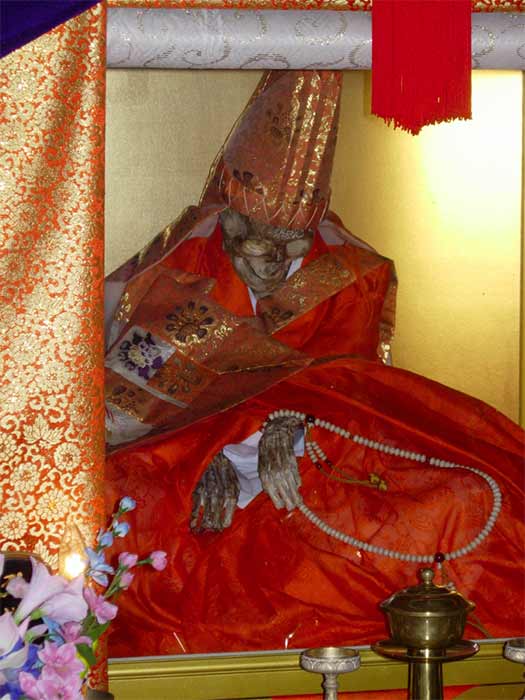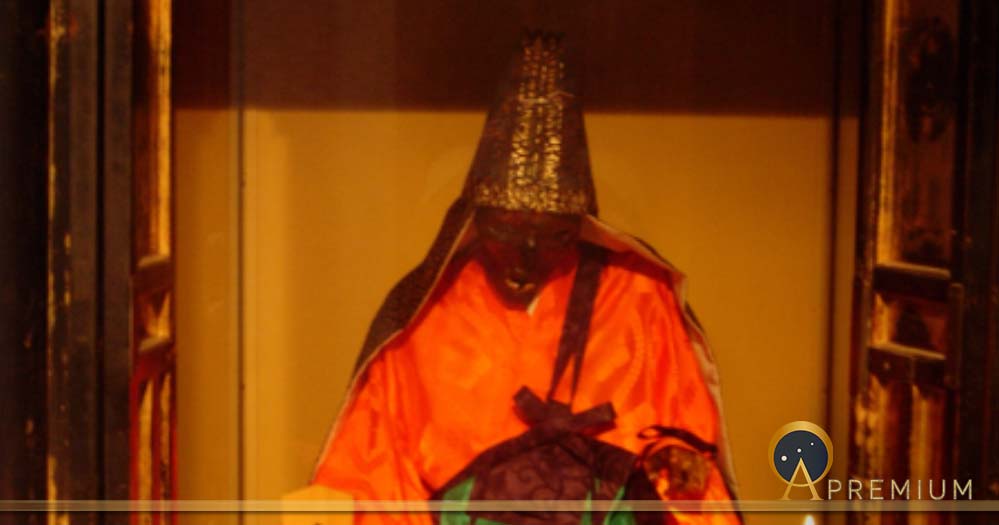Sokushinbutsu: Tales Of Living Buddhas’ Self Mummification
Immuring themselves in an underground stone chamber, sealed tight, waiting to die: that is what more than 24 known individuals did in northern Japan from the 1200s until the 19th century, though it may have been done before that timeframe and even after the Meiji restoration in 1867. The practice likely originated in India or China centuries before. This process is known as sokushinbutsu: becoming a Buddha in this very body, becoming a Buddha while still alive. Individuals who engaged in this process adopted an ascetic life. They often trained at a location called Senninzawa, and the name reflects those who trained there, as sennin can translate to “otherworldly humans” and sawa, pronounced zawa when combined with other words, means “mountain stream,” thus suggesting that individuals who went on to mummify themselves trained in a mountainous area near a stream. This they did.

The body of the monk, Honnyokai who achieved self-mummification (Image: © Dr Ken Jeremiah)
The Tribulations Of The Sennin
Stones mark the accomplishments of the ascetics who trained there; some are so worn down that they are impossible to read, but others tell the tales (or mark the accomplishments) of ascetics who trained there, whether they were successful or not: Zenkai, who abstained from cereals in Shimekake for more than 1,000 days before dying and Unkai, who confined himself inside Yudono shrine for almost 25 years, doing nothing more than meditating.
Then there was Tetsuryukai, who confined himself in the mountainous area for more than 1,000 days. He cut out his own left eye, as part of his ascetic training, while praying for a cure for an eye-illness that was wreaking havoc in Edo (modern-day Tokyo) at the time. His tale is an unfortunate one. Engaging in asceticism at the mountain stream of otherworldly humans (Senninzawa), he intended to bury himself alive with the aspiration of becoming a living Buddha ( sokushinbutsu), but he became sick on his journey and passed away. Rather than bury him alive, as was the custom for those individuals engaged in the process of self-mummification, they buried him as any other dead person would be buried; there was nothing special about it, he was simply buried and then forgotten. However, he did not stay buried for long.

Body of Shinnyokai who mummified himself (Image: © Dr Ken Jeremiah)
He began appearing in the dreams of two individuals, requesting that his body be exhumed as quickly as possible.
Like this Preview and want to read on? You can! JOIN US THERE ( with easy, instant access ) and see what you’re missing!! All Premium articles are available in full, with immediate access.
For the price of a cup of coffee, you get this and all the other great benefits at Ancient Origins Premium. And - each time you support AO Premium, you support independent thought and writing.
DR. KEN JEREMIAH has written several books about religions, mummification, and spirituality, including Living Buddhas, Christian Mummification, Eternal Remains. Making Millions: A 500-Year-Old Kabbalist's Guide to Conquering Chance, and Zen Art, Zen Writing Daily Meditations for Improving your Craft and Finding Joy in Life
Top Image: Self-Mummified body of Body of Chukai (Image: © Dr Ken Jeremiah)
By: DR. KEN JEREMIAH

















